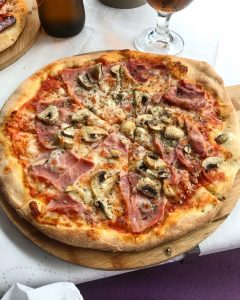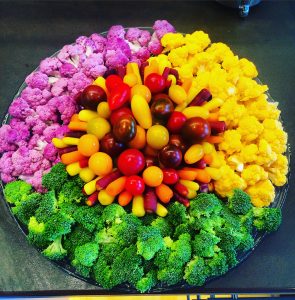Follow Us
Tags
Amsterdam Architecture Art Berlin China Culture Cycling Decline Design Economy Filming Cities Food Gentrification Glasgow Global City Globalisation Hong Kong Housing Inequality Infrastructure Istanbul Life Migration Mobility Neighbourhoods New York Politics Protest Culture Psychogeography Public Space Real Estate Social Exclusion Space Spatial Inequality Suicide Cycling Sustainability The Netherlands Tourism Transformation Transit Transport urban development Urban Planning Vancouver ViennaRecent Comments
Want to Contribute?
The Proto City is where young urban researchers share their work with the wider world. We are always looking for talented writers and would love to hear your ideas. If you have an idea for a story, click here for more information.Frequent Contributors
Blogroll
Home Recipes to Decrease Food Waste
Recipes to Decrease Food Waste

Through our groups research, the following recipes were provided as alternatives for Mediamatic. The suggestions ensures to be cost-effective, sustainable, and offers vital nutrients for the consumer. Not only that, but food waste is a major issue that needs addressing. The suggestions following the recipes are created to decrease food waste.
Beginning are recipes that are considered alternatives for pizza crust. It includes non-vegan and vegan recipes. Next is a meat-free alternative for pepperoni. Finally, a recipe for a bianca sauce which is cost effective and replaces canned tomato sauce. Following the recipes is a list of food scraps that can be utilized in dishes, methods of use, and benefits of consumption.
Sweet Potato Pizza Crust
Yield, 2-4 pizzas 8-12 inches round (approx. 12 oz. dough per pizza)
5 cups sweet potatoes, dice and peel (Approximately 2 Large potatoes)
1 1/4 cup gluten free flour
1/4 cup almond meal
1 Tbsp chia seeds (soak in water until plump and discard water)
1 Tbsp olive oil
3 Tbsp water
1 Tbsp apple cider vinegar
1-2 tsp basil
1-2 tsp oregano
1 1/2 tsp garlic powder
1/2 tsp salt
*Optional ~ 1/2 tsp Chili Flakes
Method
- Preheat oven to 400 degrees Fahrenheit.
- Boil or steam sweet potato until tender, approximately 20-30 minutes depending on size of diced potato.
- Drain potatoes and put into big bowl for other ingredients to follow. Mash sweet potatoes until desired texture (not too lumpy).
- Add all ingredients to mashed sweet potato and mix well until texture is slightly stretchy. Resembles loose bread dough. If too wet, add more almond meal or flour until desired texture.
- Line a vented pizza pan with parchment paper.
- Line pan with sweet potato mixture and make smooth and flat. Thickness should be two euro coins stacked on top of each other. 1/4 inch thick or slightly thicker.
- Bake for 20-30 minutes until edges are golden. Remove and cool slightly.
- Add sauce and desired fixings and bake for 6-12 minutes. Can heat under broiler for a few minutes as well.
- Slice and serve.
*Note May need to bake for 40 minutes due to center of crust is not set. Put aluminum around sides of crust to prevent burning.
Cauliflower “Flour” for pizza crust
Yield, approx. 3-4 cups packed if using a 3 pound cauliflower
1 Large head of cauliflower
Method
- Preheat the oven to 400 Fahrenheit.
- Use food processor to puree the cauliflower in batches.
- Pack cauliflower puree into a glass baking dish and spread to distribute evenly.
- Bake for 15 minutes.
- Allow the puree to cool enough to work with it by hand.
- Scrape puree in a fine-weave cheesecloth or dish towel and wrap tightly to squeeze all water out.
- Squeeze liquid out of the cauliflower and discard it.
Non-vegan pizza crust base
*Note: If using for pizza crust, add 1 egg to 2 pounds of cauliflower “flour” mixture after process above is completed. You can add 1 tsp oregano, pinch of salt, and 1/3 cup parmesan or 1/4 cup chevré. Add “flour” mixture to pizza pan, bake for 25-35 minutes at 400 Fahrenheit. Crust should be firm and can add toppings. Put back into oven for 6-8 minutes or until toppings look done.
Vegan cauliflower pizza crust
2 pounds cauliflower “flour”
4-6 Tbsp ground chia or flax seeds (soak seeds in water. Once plump, discard liquid)
6 Tbsp water (as needed)
1 cup almond meal
1 tsp salt
1 tsp garlic powder
1 tsp dried oregano
Method
- Preheat oven to 400 Fahrenheit
- Add and mix all ingredients until evenly mixed.
- Add parchment paper to pizza pan and apply mixture on top forming a circle with pressure.
- Bake for 20-30 minutes until golden brown and middle is set.
- Add toppings and bake for additional 6-8 minutes.
Seitan Pepperoni
Yield, 2-3 pizzas
1 1/2 cups vital wheat gluten flour
1/4 cup nutritional yeast
2 tsp mustard powder
2 tsp paprika
1 1/2 tsp crushed fennel seeds (or whole)
1 tsp salt
1 tsp ground black pepper
1 tsp garlic powder
1 tsp cayenne pepper
1/2 tsp crushed anise seeds
1/2 tsp sugar
3/4 cup cold water
1/4 cup tomato paste
2 Tbsp olive oil
2 Tbsp liquid amino acid or soy sauce
2 tsp liquid smoke flavoring (optional)
Method
- Preheat oven to 325 degrees Fahrenheit (165 degrees C).
- Mix vital wheat gluten flour, nutritional yeast, mustard powder, paprika, fennel seeds, salt, black pepper, garlic powder, cayenne pepper, anise seeds, and sugar in a large mixing bowl.
- Stir water, tomato paste, olive oil, liquid amino acid, and liquid smoke flavoring together in a separate bowl or measuring cup. Stir wet mixture into flour mixture until dough is evenly mixed.
- Turn dough onto a work surface and knead until smooth; shape into a log that is 1 1/2 to 2 inches in diameter. Tightly wrap log in aluminum foil, twisting the ends to secure.
- Bake in the preheated oven for 45-65 minutes. May go up to 90 minutes if necessary in some ovens. Unwrap pepperoni and cool to room temperature; store in refrigerator in an air-tight container or wrapped in plastic wrap.
Oregano Pesto
Yield, 2 1/2 cups of sauce
2 cup lightly packed fresh oregano
2 cup lightly packed fresh parsley
2 toes/clove of garlic
1 lemon juiced
1 Tbsp lemon zest
1/4 cup walnuts/pine-nuts/pepitas
1/2 cup parmesan cheese (vegetarian if found)
1/2 cup oil (olive, avocado, grapeseed, walnut)
Salt and pepper to taste
Method
- Combine all ingredients in food processor and puree until smooth.
- Add oil slowly while pureeing.
- Can add additional oil if to dry.
*Note: May use cilantro, basil, or rosemary in place of oregano.

Banana skin
Yes, this can be eaten. Method, put in juicer or cook it. Benefits, rich in seratonin/serotonin, great to consume during long winters. Rich in lutein, antioxidant to protect eye cells from uv light (cataracts). Preparation, cut tops and bottoms off and soak skin for several days to soften. Change water each day. Once water runs clear, boil, strain, and puree skins. Date like flavor can be added to cakes, puddings, brownies, and cheesecake.
Onion skin
Can be used in soup bases. Method, put onion skin/papery texture in soup base at last 20 minutes of cooking. Adds extra flavor and color. Benefits, may help reduce blood pressure. May reduce artery plaque build-up. Has anti-inflammatory benefits. *Note, discard papery skin before consumption.
Ginger skin
Use in hot tea. Method, steep peel in boiling water to make tea. Benefits, has anti-inflammatory benefits. People that have RA (rheumatoid arthritis) and OA (osteo-arthiritis) may experience in pain reduction. Improves mobility when consumed regularly. Also good to boost immune system when feeling ill. *Note, discard skin when consuming liquid.
Lime, lemon, and orange peel
Can be used in tea, water, salads, infuse with oil, baking confections, roast foul, cocktails, and desserts. Benefits, has anti-oxidants that may help reduce cholesterol. Has more antioxidants in peel than juice itself (Higher in oranges and tangerines). Method, grate peel, put in saucepan with sugar and cook down until liquid thickens for candied citrus peel, put in butter for roasting foul.
Broccoli leaves
Can be eaten cooked. Benefits, has folate (great while consuming during pregnancy) prevent birth defects, iron, and potassium. An ounce of broccoli leaf provides 90% of daily requirement of vitamin A. Florets provide around 3% of immune boosting vitamin. Method, blanch quickly in boiling water. Can fry in little fat. Add to pasta, other green vegetables, and can be baked in chocolate cakes/brownies. Great in salads and on pizza.
Cauliflower leaves
Great eaten raw and cooked. Benefits, one of the richest sources of iron, fiber, and calcium. Great for immunity boosting, bones, fiber is great for digestion system. 3.5 oz of cauliflower leaves has around 600 milligrams of calcium. Method, sauté in butter and add toasted nuts on top. Can be fermented with other vegetables. Preparation, great in soups, stews, garnishes, and salads.
Watermelon rind
The white between green rind and pink flesh of watermelon is rich in citrulline. Benefits, great for circulation and dilation of blood vessels. Also good for detoxifying body to remove toxins. Method, can remove white part from green rind. Preparation, Use in salads, relishes, jams, ceviché, juice and smoothies. Can be prepared for pickling/fermentation and use on white fish.
Thank you so much to both of my colleagues Elsher Lawson Boyd and Khadija Benis. It’s been a pleasure collaborating on this project and sharing the Amsterdam experience with both of you!
Categories
- Build & Destroy (77)
- Comparative Urbanism (12)
- Consuming the City (11)
- Discover (16)
- Earn & Spend (32)
- Food and the City (9)
- Live & Die (69)
- Move & Stay (21)
- Suicide Cycling (21)
- The Open City (5)
- Who Makes the City? (13)
-
Recent Posts
- Mexico City and Washington DC – two capitals in comparison
- Global processes through a local lens, comparing urban inequality in Toronto and Bangkok.
- Chicago and Kuala Lumpur: Through the Lens of Comparative Urbanism
- Copenhagen and Montevideo: bonded by progression
- At what costs? (Un)controlled urban expansions and socio-ethnic segregation in Luanda and Paris.
Recent Comments
© 2012 - 2019 The Protocity.com. All rights reserved.
Back to top
